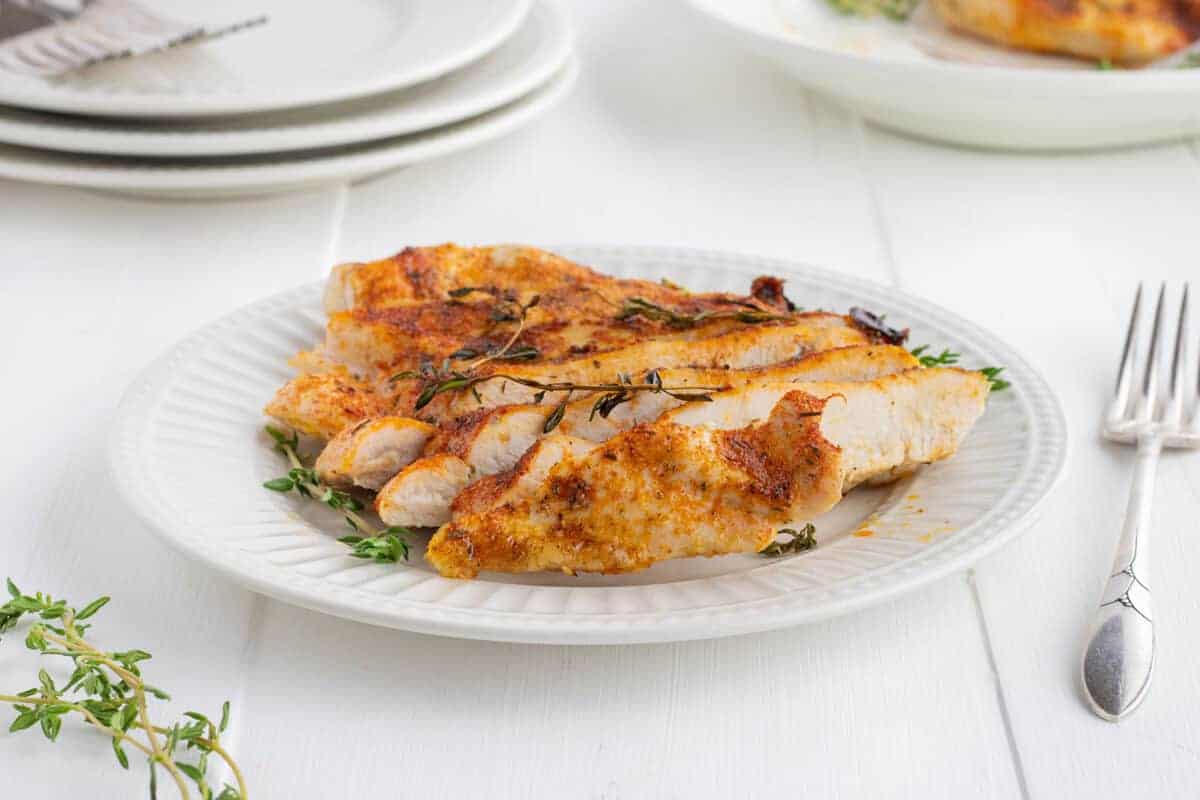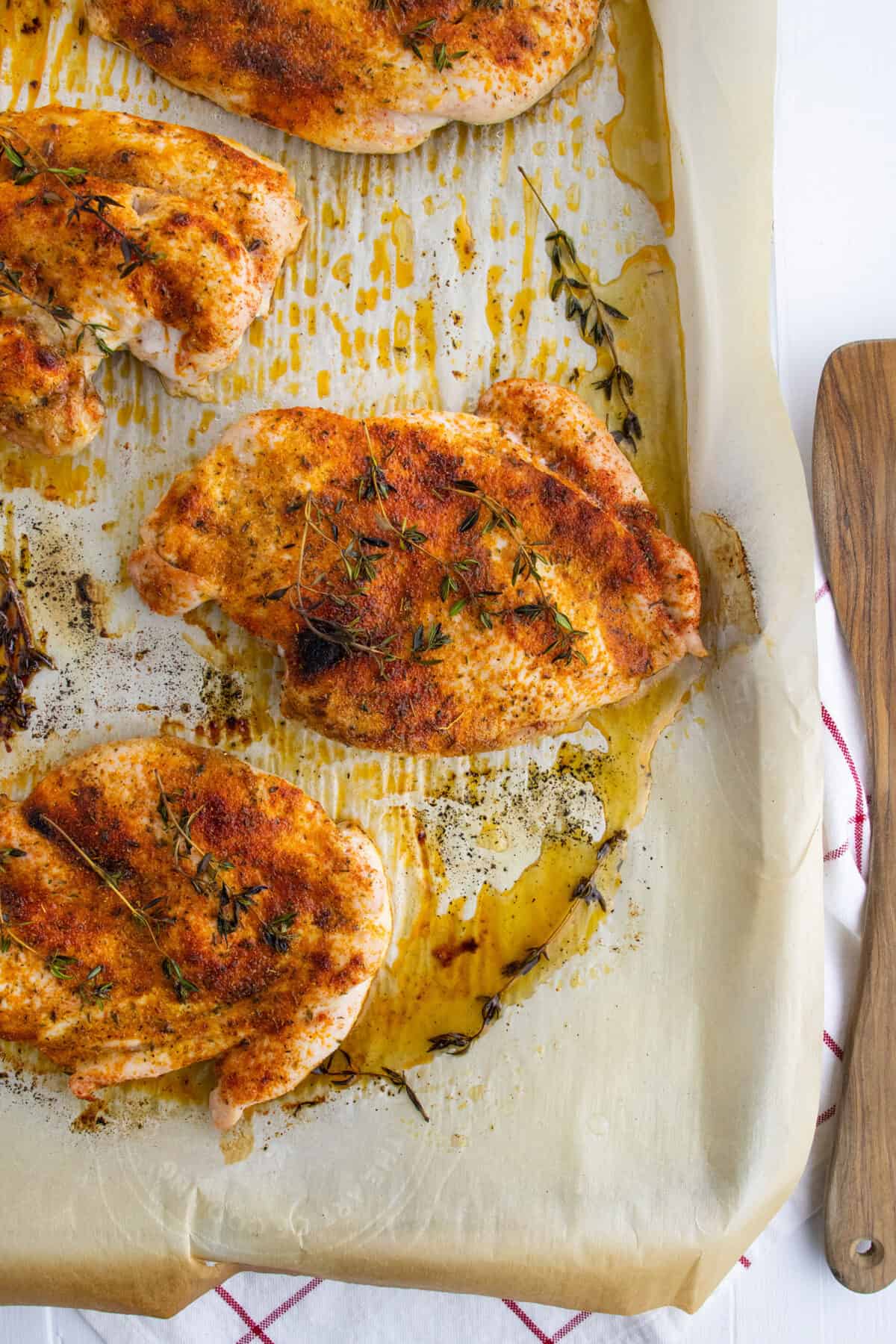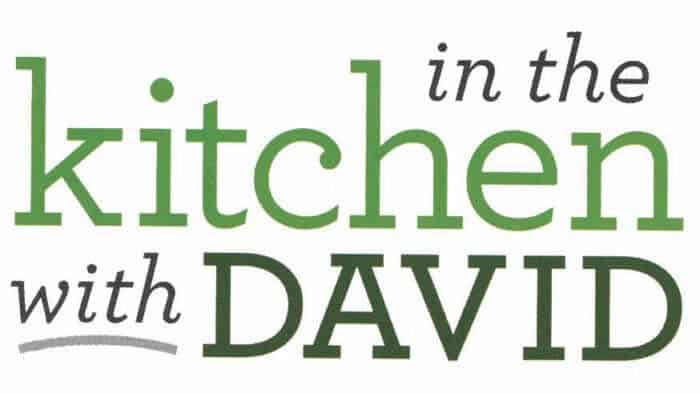Baked chicken breast might just be the perfect source of protein – easy to make, healthy, and delicious when prepared properly. This recipe uses some simple chicken seasoning and some good cooking techniques to produce tender, succulent, and tasty chicken breasts every time.
For more tasty recipes using chicken, why not try some Chicken Francaise, Easy Chicken Pot Pie Casserole or some Chicken Piccata!

Baked Chicken Breast
Chicken breasts definitely have a bit of a reputation for being dry or unappetizing. A big part of this is because of a lack of knowledge when it comes to how to properly prepare them.
The key is proper temperature control, alongside some special tricks to keep the whole thing juicy, moist, and tender.

Baked Chicken Breast Ingredients
Make sure you look at the recipe card at the very bottom for the exact amounts, as there are a few fiddly ingredients here.
Chicken
• Large chicken breasts, skinless and boneless
• Oil
Chicken Seasoning
• Dried thyme
• Garlic powder
• Onion powder
• Paprika
• Smoked paprika
• Dried parsley
• Sea salt
• Black pepper

How To Make Baked Chicken Breast
• Place the chicken breasts between two pieces of plastic wrap and then pound to an even thickness
• Whisk all of the seasonings together in a small bowl
• Line a tray with parchment paper and rub each chicken breast with olive oil and then sprinkle with the seasoning
• Place the chicken on the parchment paper and bake for 20 minutes until the internal temperature is 165 Fahrenheit
• Remove from the oven and rest for 2 minutes before cutting and serving

How To Bake Tender, Juicy Chicken Breast
Chicken breasts are a fantastic source of easy and cheap protein, but their horrible habit of getting dried out and chalky rather ruins their edibility.
The trick with chicken breasts and keeping them tender is ensuring that you cook them quickly at high heat. This lets you get all of those delicious browned bits on the surface while still being able to enjoy juicy, tender meat inside.
This follows along with the standard rule of cooking things with lots of fat = low and slow, but low fat = hot and fast.
Chicken breasts have a big problem, though – they aren’t shaped to cook that way. They usually have a big, bulging bit at one end, which takes longer to cook than the thinner end.
The trick to solve this issue is to pound it to an even thickness. Using either a meat mallet or even just the bottom of a solid pint glass, you can pound the meat so that it is evenly thick all over, allowing them to finish cooking all at the same time.

What Temperature Should You Cook Your Chicken Breasts To?
The perpetual problem with cooking chicken, and indeed the big reason why some people try to avoid chicken altogether, is the risk of salmonella. While many places around the world, such as the UK, have inoculated their chicken flock and thus eliminated most of the risk associated with salmonella, it is still a big problem in places like North America.
However, as long as you always cook your chicken to the correct temperature, you’ll be fine.
Chicken breast is 100% safe to eat once it has reached 165 Fahrenheit internal temperature. At that temperature, any and all pathogens are killed instantly, and there is no risk to your health.
That doesn’t mean you should cook your chicken until it hits 165, though! You need to take into account carry-over heat; as the chicken breast cools, it will continue to heat up its internal temperature, usually by at least 5 degrees Fahrenheit.
So, for the juiciest yet safest possible chicken breast, you should cook your chicken until its temperature is 160 Fahrenheit as registered on an instant-read thermometer. From there, the temp will continue to climb until it hits the perfectly safe temp of 165.

Chicken Breast Cooking Tips
Chicken breasts are super versatile and are a delicious way to add some healthy meat to any dish, but that versatility and ease of use come with a problem; people think that chicken breasts can be used in any recipe.
While you can easily bulk out all kinds of dishes with some chicken breasts, there are just some meals that cannot be made using chicken breasts.
Most of the time, this is because of the cooking time – chicken breasts simply cannot handle long cooking times. Their protein fibers harden up, and they become disgustingly chewy and rubbery.
So do not, under any circumstances, try and use chicken breasts that involve long cooking methods. This includes things like stewing, barbequing, or braising.
If you really want to use chicken, switch to chicken thighs instead – they’ll hold up much better with a longer cooking time.
Looking for more delicious Chicken recipes? Try these out:
• Instant Pot White Chicken Chili
Enjoy and happy cooking!
Love,
Karlynn

Pin This Recipe To Your Dinner Recipes Board and Remember to FOLLOW ME ON PINTEREST!


Baked Chicken Breasts
Ingredients
Chicken
- 4 large chicken breasts skinless and boneless
- 2 tablespoons oil
Chicken Seasoning
- 1 teaspoon dried thyme
- 1 teaspoon garlic powder
- 1 teaspoon onion powder
- 1 teaspoon paprika
- 1 teaspoon smoked paprika
- 1/2 teaspoon dried parsley
- 1/2 teaspoon sea salt
- 1/4 teaspoon black pepper
Instructions
- Preheat oven to 425°F,
- Place the chicken breasts between two pieces of plastic wrap, then pound into an even thickness, anywhere from .6 to .8 of an inch thick. Adjust the thickness of all of the pieces to match your thinnest chicken breast so that they are all the same size.
- Whisk together the seasoning in a small bowl.
- Line a tray with parchment paper. Rub each chicken breast with olive oil then sprinkle with the seasoning, covering the surface in an even layer, covering the chicken as much as you like. Place each chicken breast on the parchment paper.
- Bake for 18-20 minutes until the internal temperature is 165°F using an instant read thermometer.
- Remove from oven and transfer to your serving platter. Let rest 2-3 minutes, then serve.
Notes
- Making sure that the chicken is the same thickness ensures a tender, juicy chicken breast that cooks quickly and evenly!









Cat says
Hi – you say “large” chicken breasts, and show nutrition info, but how can WE know what the nutrition info is if we have no definitive weight for the “large” breasts? Thanks for any specific info you can give, at least the weight of the breasts you used.